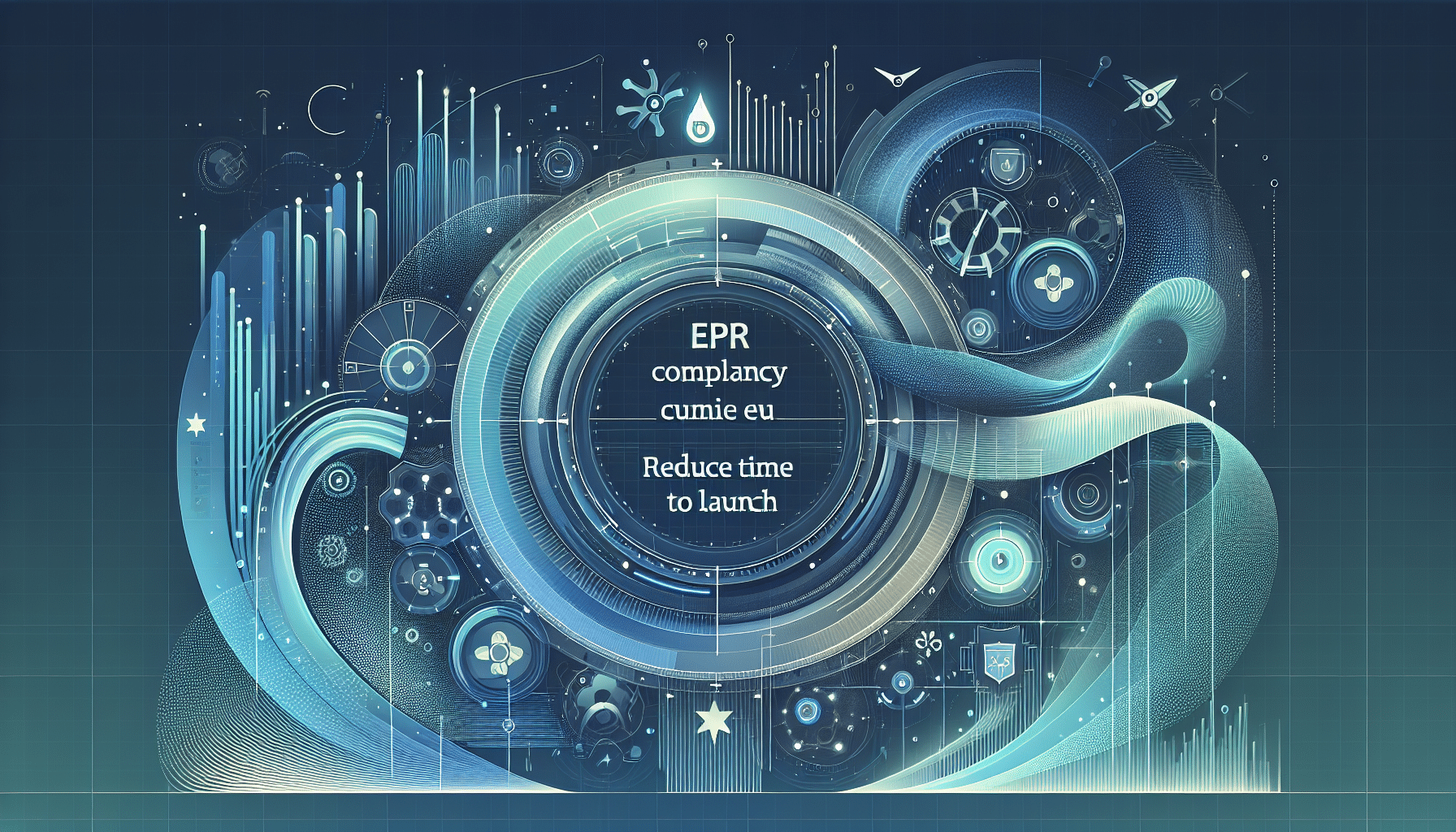About eldris
epr.eldris.ai leads the EPR sector, in fast, automated, AI Agent EU packaging, WEEE, and Battery Compliance for Brands, E-Commerce and Service based businesses expanding into the EU.
In This Article
- EPR Compliance EU is a pre-condition for product distribution across the EU.
- Different countries enforce distinct registration and reporting requirements.
- Failure to comply can result in launch delays ranging from weeks to months.
- Automation and expert assistance can significantly reduce registration times.
- A harmonised compliance system integrates EPR with broader regulatory needs.
Understanding EPR and Its Role in EU Market Entry
Why EPR Matters Before Launch
The European Union has stringent regulations when it comes to environmental responsibility. If you’re planning to introduce products into this market, achieving EPR Compliance EU is not optional—it’s obligatory. EPR, or Extended Producer Responsibility, places the onus on producers to take responsibility for the entire lifecycle of their products, particularly focusing on post-consumer waste. This includes packaging, electrical and electronic equipment (WEEE), batteries and more.
Without proper EPR compliance, your business could face administrative penalties, import restrictions or even bans from national markets. As such, understanding and planning for EPR obligations is critical to any successful EU product launch. EPR affects timeline considerations due to the various legal, bureaucratic and system-based demands it places on producers. These include country-specific registrations, submission of detailed documentation and stringent waste management reporting obligations.

What’s Required for EPR Compliance?
Documents, Registrations, and Member States
Gaining EPR Compliance EU involves a multifaceted set of requirements that differ across member states. Generally, companies must register with national authorities in each EU country where they distribute their products. This often means dealing with a disparate set of agencies, each with its own procedures and timelines.
You’ll need to provide extensive documentation, including:
- Product classification and weights
- Volume forecasts and historical data
- Proof of legal representation within the member state
- Certificates establishing recycling efforts and partners
Additionally, some states require local legal entities or Authorised Representatives (ARs) to handle filings. All of this must be approved before any product can legally enter that market. Missing or late submissions can cost you several weeks, if not months.
How EPR Causes Launch Delays
Compliance Bottlenecks to Anticipate
The administrative overhead of EPR Compliance EU can introduce unforeseen delays that upset even the best-laid product launch strategies. One of the primary bottlenecks lies in acquiring registration numbers from national registers. These numbers are preconditions for being listed with marketplaces, customs and transportation partners.
Moreover, many EPR schemes have backlogs, especially during peak seasons, such as before year-end retail events or new environmental policy rollouts. The complexity multiplies when you aim to launch across multiple markets simultaneously. If you’re planning an EU-wide rollout, anticipate that some jurisdictions will approve your application in weeks—others might take months.
Country-Specific Requirements That Slow Down Launches
Packaging, WEEE, Batteries—What You Must Prepare
While the umbrella concept of EPR applies EU-wide, implementation varies widely. For effective EPR Compliance EU, you must adapt to each country’s nuances. For example, Germany’s VerpackG requires producers to register with the Central Packaging Registry (Zentrale Stelle Verpackungsregister) and join a dual system. France’s EPR landscape includes additional categories like textiles and toys, with differentiated reporting thresholds.
WEEE requirements dictate separate registrations, recycling partnerships and symbols compliant with local language mandates. Battery directives often require submission of chemical composition data, battery weight and recycling metrics. Each individual product component might fall under different EPR categories, meaning you’ll have to compile extensive evidence tailored to each legislation.
The 2025 EU Regulation Shift: Why Time Is Critical
Upcoming Changes to Know Today
Time is of the essence when it comes to EPR Compliance EU, particularly with the sweeping regulatory overhauls anticipated in 2025. The EU Commission is set to implement a harmonised framework, aiming to eliminate disparities in member state interpretations. While this might reduce some paperwork long-term, it introduces stricter baseline requirements in the short term.
Expect mandatory digital platforms for waste tracking, carbon footprint disclosures and extended obligations for online marketplaces. For global sellers using fulfilment services, liability will no longer lie with the intermediary—it will be squarely on the producer. Businesses failing to meet these enhanced requirements could face exclusion from prominent EU markets or even criminal charges in aggravated cases.
How Automation Cuts Weeks Off Your Timeline
Using AI to Streamline EPR Registration
Manual compliance processes are not only inefficient but also highly error-prone. Leveraging AI tools and software automation can dramatically reduce the time required to achieve EPR Compliance EU. Machine learning algorithms can analyse product portfolios, identify applicable EPR categories and auto-generate the required documentation.
Automation platforms also streamline data entry, flag incomplete applications and facilitate real-time submission tracking across jurisdictions. Some tools integrate directly with fulfilment and ERP systems, syncing sales volumes with EPR reporting requirements. By reducing human intervention, companies can cut their compliance process from months to mere weeks. This level of efficiency can drastically accelerate your go-to-market timeline.
Checklist to Prevent Go-to-Market Delays
Your Pre-Launch Compliance Scorecard
To navigate EPR effectively and safeguard your launch schedule, use this compliance checklist:
- Identify all product categories subject to EPR
- List countries where launch will occur
- Determine local registration requirements by country
- Secure Authorised Representatives (ARs) where needed
- Digitise product and packaging data
- Pre-register with all Producer Responsibility Organisations (PROs)
- Validate product labelling and language requirements
- Integrate EPR data with your internal systems
- Schedule registration submissions before key marketing milestones
- Maintain an audit trail of compliance communications
This checklist, when acted upon early in the product development cycle, is a powerful tool for maintaining launch momentum and preventing compliance-based delays.
Why Compliance Services Are Worth the Investment
ROI of Outsourcing Versus In-House Compliance
Whether to manage EPR Compliance EU internally or through external consultants is a strategic decision. While internal resources offer more control, the learning curve and administrative burden can overwhelm lean teams. On average, companies that outsource EPR to specialised service providers reduce their time-to-market by 30%.
More importantly, outsourcing partners are deeply familiar with evolving legislation. They maintain stakeholder relationships, offer localisation capabilities, and proactively manage updates across all relevant jurisdictions. Outsourcing also lowers the risk of financial penalties due to non-compliance. Compared to in-house teams, outsourced services tend to ensure a higher degree of completeness, which safeguards commercial operations during audits and renewals.
Integration with Other Regulatory Processes
Harmonising EPR with Safety, Labelling, and More
EPR Compliance EU is not an isolated obligation. It intersects with other mandatory requirements, including CE marking, REACH chemical safety, food contact materials and local sales tax registrations. A fragmented approach can result in data inconsistencies and increase audit exposure.
The savvy approach is harmonisation. Leveraging a central repository for product data, including technical files, labelling, bill-of-materials and compliance certifications, ensures greater coherence. Many companies fail to factor in the EPR component when finalising product packaging, only to later discover their materials must be revised to comply with recyclability mandates. When you manage regulatory obligations holistically, you save considerable time and resources.
Case Study: EPR Launch Delays and How to Avoid Them
Lessons from Real Brand Experiences
Consider the example of a UK tech startup planning to roll out a new smart home device across five EU countries. The launch stalled for over nine weeks due to delayed EPR filings in France and Germany. They had underestimated the time needed to procure local ARs and obtain their producer registration numbers.
Additionally, their packaging included materials banned under France’s Triman labelling rules, necessitating a full print overhaul. However, after engaging an EPR compliance consultancy, the company fast-tracked its launch in the remaining countries and avoided further delays. Their experience underscores the critical nature of early and accurate EPR preparation.
“Ignoring EPR obligations cost us nearly €30,000 in missed revenue. With the right guidance, we could have avoided it all.” — Head of Expansion, IoT Startup
Final Thoughts: Fast-Track the EU Launch
EPR Compliance EU is arguably one of the most underappreciated yet pivotal aspects of launching a product in the European Union. Extensive regulatory requirements, nationwide variations and intricate reporting obligations can quickly derail product timelines if not addressed early and systematically.
To streamline your entry into the EU market, start by embedding EPR considerations into your pre-launch roadmap. Leverage automation, professional services and national expertise. Treat compliance as a launch enabler—not an afterthought. The effort invested up front will not only expedite your go-to-market strategy but also foster long-term operational resilience.
Great guide on how-epr-impacts-your-product-launch-timeline-in-the-eu – Community Feedback
How does EPR work in Europe?
In Europe, Extended Producer Responsibility (EPR) requires producers and online retailers to ensure proper recycling or disposal of products at end-of-life. This applies to categories like packaging, electrical devices (WEEE), and batteries, making producers accountable for compliance throughout the product lifecycle.
What are the challenges of extended producer responsibility?
Challenges of EPR include expanding scopes across product categories, modulated fees that vary by product and country, and navigating complex reporting and registration requirements, which can delay product launches if not managed proactively.
What is the significance of the term EPR extended producer responsibility?
EPR entails producers being responsible for the entire lifecycle of their products, including the post-consumer stage. The policy drives improved recycling rates and helps companies meet stricter environmental targets set by the EU.
What are the changes to EPR in 2025?
From 2025, EU EPR regulations expand responsibilities for producers, especially around packaging. Key changes include broader accountability for lifecycle management, stricter data reporting, and new obligations for household-targeted packaging.










